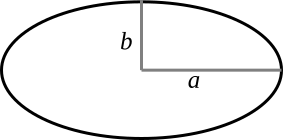Writing Your Own Functions¶
These built-in functions (and ClojureScript has many, many more) are all well and good, but I’m guessing you are wondering how you can write your own functions. Wonder no longer; here we go.
The Parts of a Function¶
Let’s start with implementing an average function that takes two arguments and yields their average as a result. Here’s the definition:
(def average (fn [a b]
(/ (+ a b) 2.0)))
Analyzing this step by step:
def averagesays that you want to bind the symbolaverageto some value.- That value is the special form
(fn ...), which means “function”. - The first argument to
fnis a vector of parameter names. A vector is a sequence of items in square brackets. (You will learn more about vectors in an upcoming chapter.) The function you’re defining needs two inputs, so there are two items in the vector. In this case, they have generic names:aandb. - The second argument to
fnis the function body. In this case, it consists of one nested expression:(/ (+ a b) 2.0). The value of the last expression in the function body is the function’s result.
Once a function is defined, you can call it exactly like any other ClojureScript function; you give its name after an opening parenthesis, follow it by the arguments you want to transform, and close the parentheses.
You can think of a parameter as a placeholder; it’s “extra information” that a function needs to do its job. For example, if I asked you to “calculate the square root,” you would ask me, “The square root of what?” That “what” is a parameter.
When you call the function, you have to provide a value to bind to that placeholder; you have to provide the number whose square root you want. That value is the argument to the function.
A parameter is a placeholder symbol in the defintion of the function.
An argument is the actual value that will bind to the placeholder.
So, in the preceding example, a and b are the parameters; when you make the function call, the 5 and 17 are the arguments whose values will be bound to the parameters.
Here’s another function with two parameters; it finds the area of an ellipse as shown in the following figure, using the formula π ∙ a ∙ b:

Ellipse with semi-major and semi-minor axis
Now, you try it. Write a function named surface-area that calculates the surface area of a rectangular prism with sides of length a, b, and c. The formula is 2(ab + bc + ac).

Rectangular prism
A Shortcut for Defining Functions¶
Defining functions is such a common operation in ClojureScript that the language provides a shortcut: defn, which combines def and fn.
In short, you use defn instead of def and drop the opening (fn and its closing ). As a result, the parameter vector immediately follows the function name.
As a concrete example, here are the definitions of average and ellipse-area in the shortcut form:
This book will use the defn special form for most of its function definitions because it is so convenient. If you are a fan of fn, do not be disappointed; it will make its triumphant return when we discuss anonymous functions.